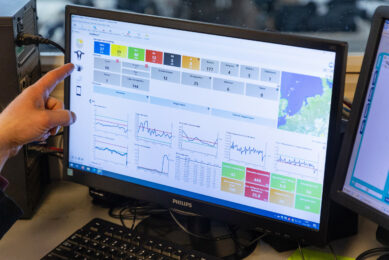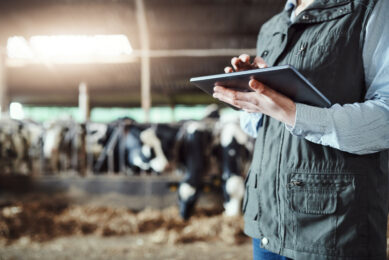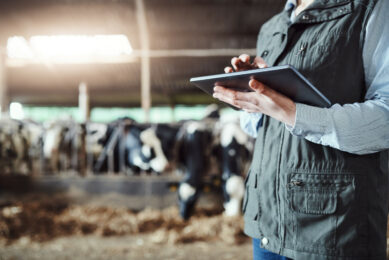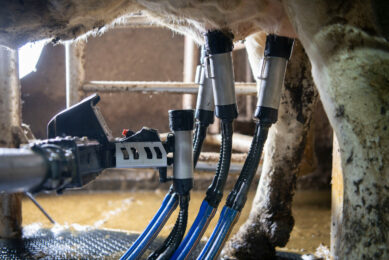Dairy farmers’ appetite for big data is growing fast
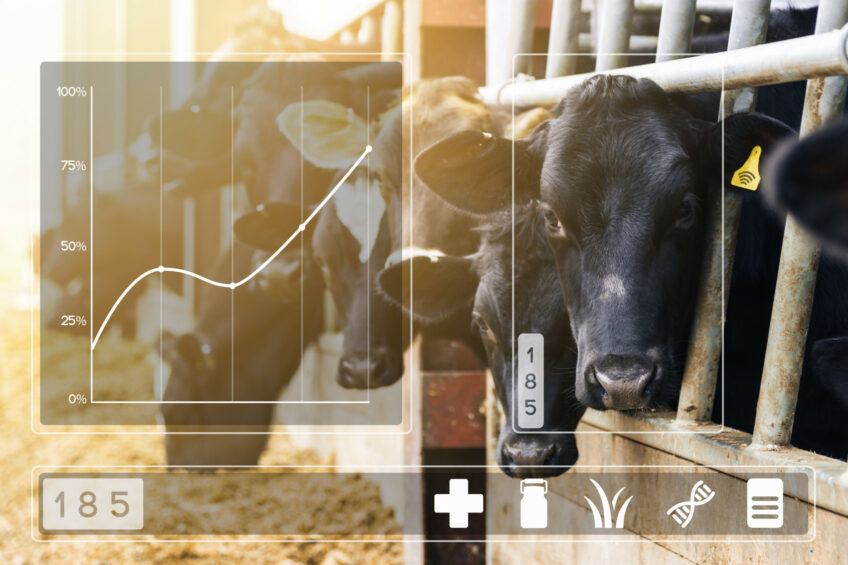
New technology being developed for dairy farmers is heavily influenced by the growing appetite for big data and artificial intelligence. This was the consensus of a number of exhibitors at the recent Agromek show in Denmark.
Today, dairy farmers could spend hours on their mobile phones analysing various sets of data recorded by the latest technology, but they seem to want more and more. Agromek acted as the launchpad for a number of new products that should help farmers improve the welfare, health and productivity of their cows. Smart technology was clearly evident as the key sales driver of some of these new products, while the simplistic approach to their use was also a key factor.
Rumen data
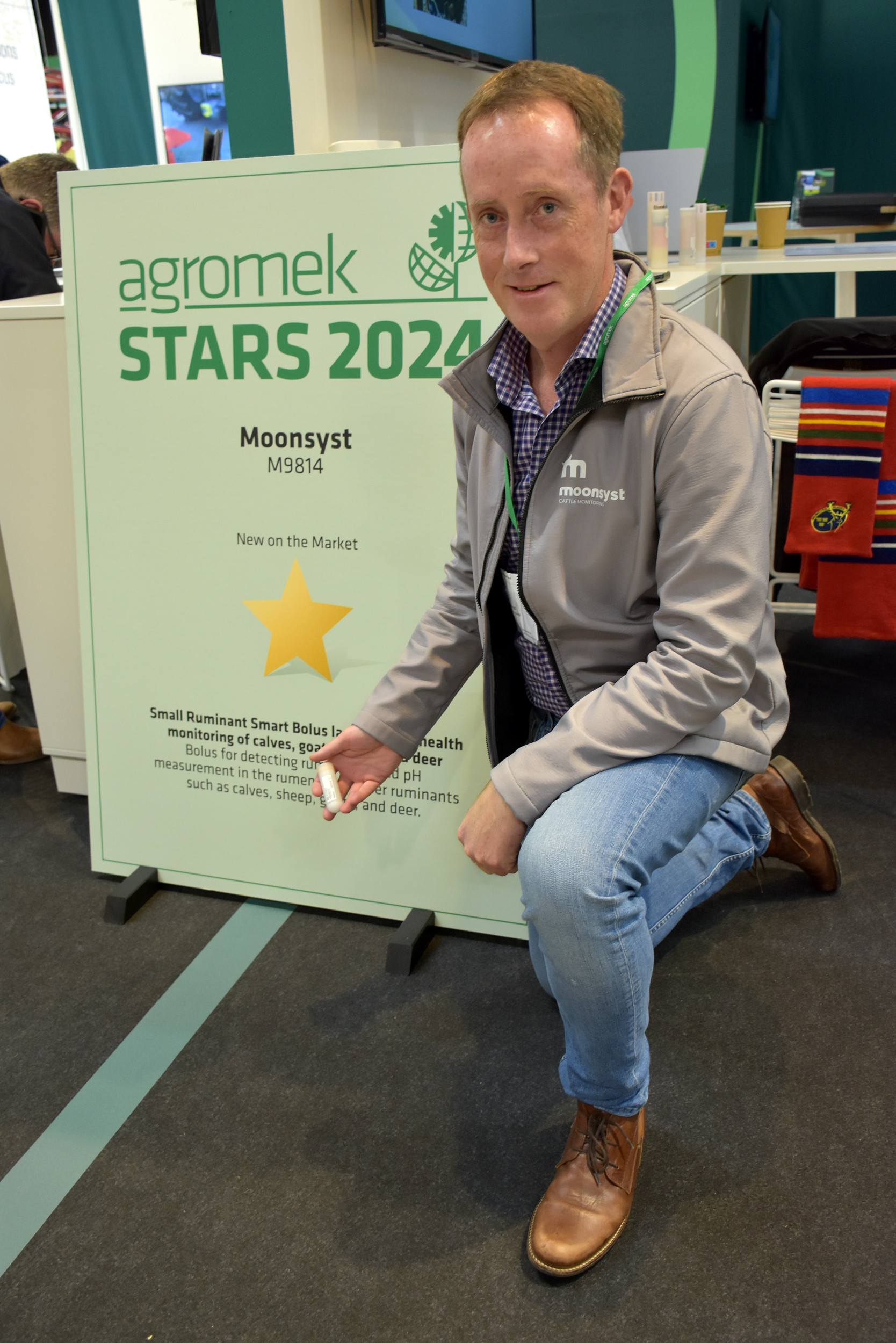
Promoting his latest ‘fitbit for cows’ was Desmond Savage, the director of Irish company Moonsyst, which developed smart boluses that send all sorts of real-time data from the cows rumen to the farmer. Armed with this data, farmers can accurately detect heat, monitor health conditions and ultimately improve productivity. The Moonsyst system is supported by cloud-based software that can be accessed on a phone and PC.
“There is a wealth of technology now available to dairy farmers to help them manage their herds more efficiently. And there seems to be no end to the demand for it.,” said Savage. “Farmer demands have changed fast over the years, and while they used to spend hours in the shed looking at the cows, now they can sit in the comfort of their living rooms and let the technology do its thing.”
He said that the software in the company’s bolus uses artificial intelligence to predict health and heat events related to the animal. The more information collected the more accurate predictions become, helping the farmer with livestock management 24/7.
The boluses are maintenance-free devices that stay in the rumen of the animal for its lifetime. Each bolus has a unique ID that can be associated with the animal. Made of an acid-proof resin which protects the electronic parts and causes no harm inside the animal, the bolus is equipped with a battery that has a life span of over 6 years.
“Armed with the data from our bolus, decisions such as choosing cows to breed from, or what feed to use, are made a lot easier. It is probably essential that any dairy farmer wanting to stay in business in today’s modern world embraces technology and makes full use of it,” he said.
Treating mastitis with a laser
Danish company Neeo Bovis launched its new tool that can treat various forms of mastitis with a laser, reducing the need for antibiotics in the herd. The laser light penetrates deep into the tissue of the udder, right down to the individual cells which utilise the energy from the laser light and activate the cow’s natural repair mechanisms. According to the company, this results in an enhanced healing process and strengthening of the immune system.
Magnus Timmermann, an instructor with Neeo Bovis, said: “Our laser treatments are gentle, non-invasive and painless. We offer a safe and effective method to strengthen the cow’s healing potential and improve its general health and well-being. We find that the cow expresses well-being from the start of the treatment. Among other things, we have seen rumination, and that the cow follows the laser, as it can feel pain relief from the start.”
The company says that with 15 seconds laser treatment per teat, acute mastitis can be treated within 3 days and cellular mastitis in 5-7 days. The actual hand-held laser tool is rented from Neeo Bovis for a monthly rate, which, in turn, saves on the costs of antibiotic treatments in the herd.
Timmermann said: “This technology evolved from increased demand from farmers to find a solution to treat mastitis that didn’t involve antibiotics and all the regulations that go with it. Our technology works fast and is a huge saving on both time and expense. Most dairy farmers are no longer scared of technology and are really quite accepting to use it and hopefully benefit from it.”
Evaluating genetics
The key emphasis at the VikingGenetics stand was on ear tag technology that monitors calf behaviour right through to becoming dairy cows. The company had also commercially launched CFIT, which uses 3D cameras and artificial intelligence to identify cows, estimate their weight and quantify how much they eat. This data, in turn, can help evaluate which genetics are being the most efficient at converting food to milk production.
Ivan Bom Rasmusson from the company said: “It’s amazing the speed of technology development over the past few years. The data gleaned from our technology is helping farmers make informed decisions about their feeding regimes and which genetics to use in future breeding programmes. The data from the ear tags on the calves also help with future rearing cycles and feeding, ultimately ending up with a mapped data history of that animal when she is in the milking herd. Technology is moving fast and is sure to get more specified and useful in future farming,” he said.
This year’s Agromek show hosted 553 exhibitors and 43,000 visitors. Today, dairy farmers could spend hours on their mobile phones analysing various sets of data recorded by the latest technology, but they seem to want more and more. Agromek acted as the launchpad for a number of new products that should help farmers improve the welfare, health and productivity of their cows. Smart technology was clearly evident as the key sales driver of some of these new products, while the simplistic approach to their use was also a key factor.
Rumen data
Promoting his latest ‘fitbit for cows’ was Desmond Savage, the director of Irish company Moonsyst, which developed smart boluses that send all sorts of real-time data from the cows rumen to the farmer. Armed with this data, farmers can accurately detect heat, monitor health conditions and ultimately improve productivity. The Moonsyst system is supported by cloud-based software that can be accessed on a phone and PC.
“There is a wealth of technology now available to dairy farmers to help them manage their herds more efficiently. And there seems to be no end to the demand for it.,” said Savage. “Farmer demands have changed fast over the years, and while they used to spend hours in the shed looking at the cows, now they can sit in the comfort of their living rooms and let the technology do its thing.”
He said that the software in the company’s bolus uses artificial intelligence to predict health and heat events related to the animal. The more information collected the more accurate predictions become, helping the farmer with livestock management 24/7.
The boluses are maintenance-free devices that stay in the rumen of the animal for its lifetime. Each bolus has a unique ID that can be associated with the animal. Made of an acid-proof resin which protects the electronic parts and causes no harm inside the animal, the bolus is equipped with a battery that has a life span of over 6 years.
“Armed with the data from our bolus, decisions such as choosing cows to breed from, or what feed to use, are made a lot easier. It is probably essential that any dairy farmer wanting to stay in business in today’s modern world embraces technology and makes full use of it,” he said.
Treating mastitis with a laser
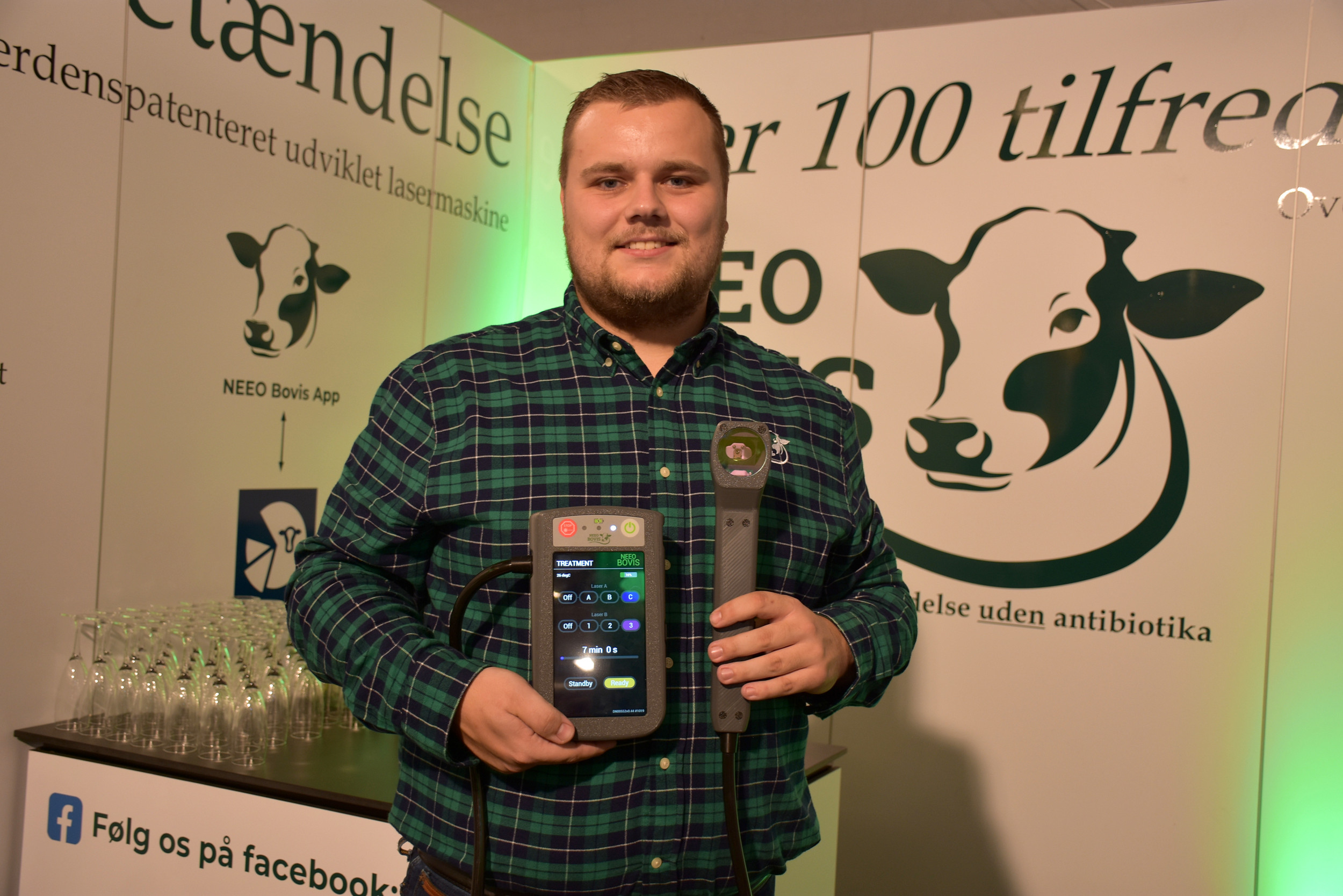
Danish company Neeo Bovis launched its new tool that can treat various forms of mastitis with a laser, reducing the need for antibiotics in the herd. The laser light penetrates deep into the tissue of the udder, right down to the individual cells which utilise the energy from the laser light and activate the cow’s natural repair mechanisms. According to the company, this results in an enhanced healing process and strengthening of the immune system.
Magnus Timmermann, an instructor with Neeo Bovis, said: “Our laser treatments are gentle, non-invasive and painless. We offer a safe and effective method to strengthen the cow’s healing potential and improve its general health and well-being. We find that the cow expresses well-being from the start of the treatment. Among other things, we have seen rumination, and that the cow follows the laser, as it can feel pain relief from the start.”
The company says that with 15 seconds laser treatment per teat, acute mastitis can be treated within 3 days and cellular mastitis in 5-7 days. The actual hand-held laser tool is rented from Neeo Bovis for a monthly rate, which, in turn, saves on the costs of antibiotic treatments in the herd.
Timmermann said: “This technology evolved from increased demand from farmers to find a solution to treat mastitis that didn’t involve antibiotics and all the regulations that go with it. Our technology works fast and is a huge saving on both time and expense. Most dairy farmers are no longer scared of technology and are really quite accepting to use it and hopefully benefit from it.”
Evaluating genetics
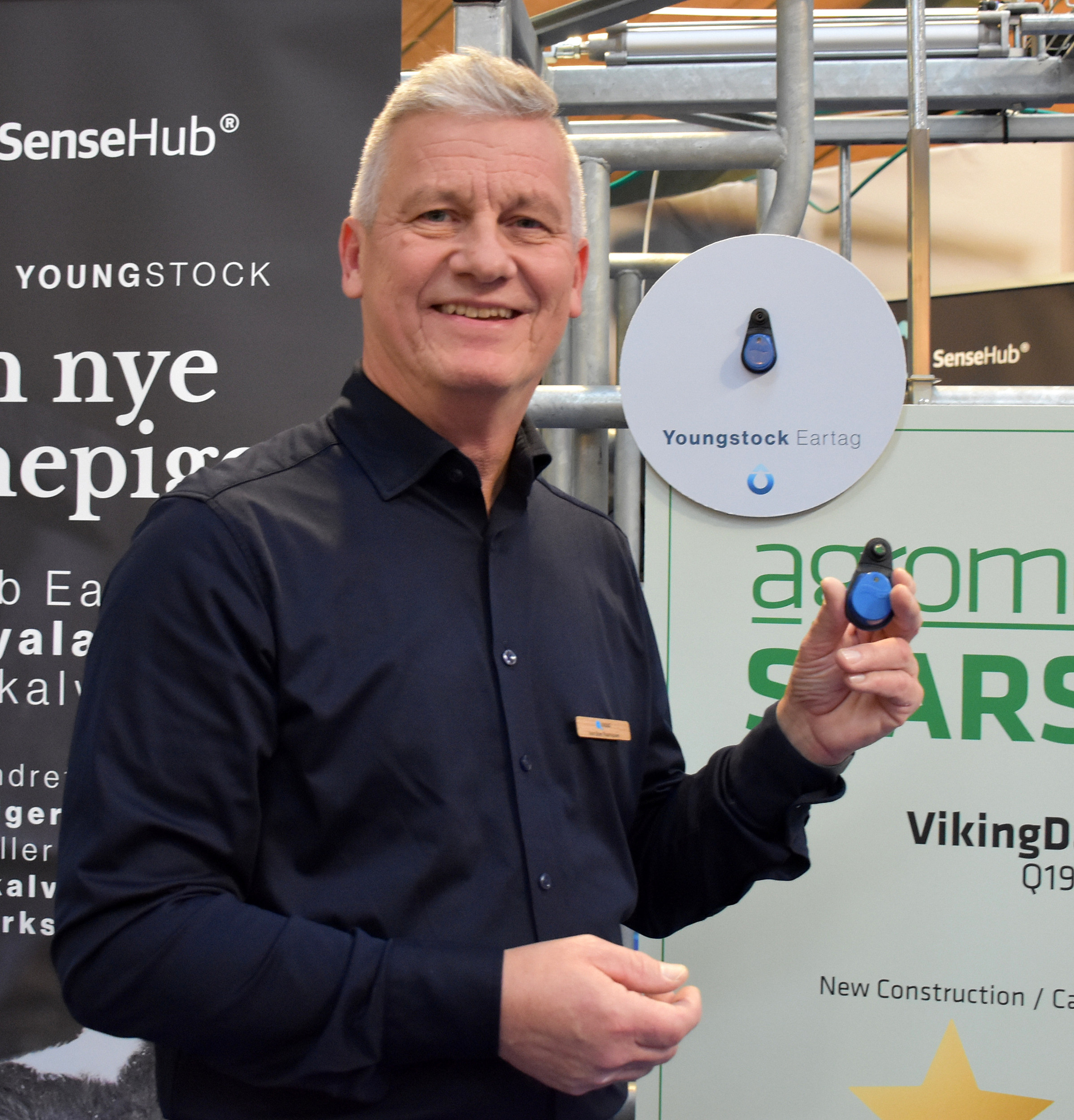
The key emphasis at the VikingGenetics stand was on ear tag technology that monitors calf behaviour right through to becoming dairy cows. The company had also commercially launched CFIT, which uses 3D cameras and artificial intelligence to identify cows, estimate their weight and quantify how much they eat. This data, in turn, can help evaluate which genetics are being the most efficient at converting food to milk production.
Ivan Bom Rasmusson from the company said: “It’s amazing the speed of technology development over the past few years. The data gleaned from our technology is helping farmers make informed decisions about their feeding regimes and which genetics to use in future breeding programmes. The data from the ear tags on the calves also help with future rearing cycles and feeding, ultimately ending up with a mapped data history of that animal when she is in the milking herd. Technology is moving fast and is sure to get more specified and useful in future farming,” he said.
This year’s Agromek show hosted 553 exhibitors and 43,000 visitors.



